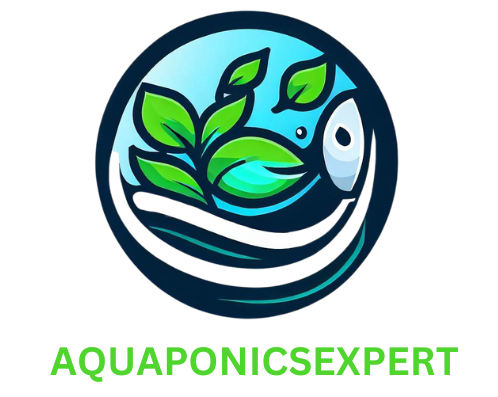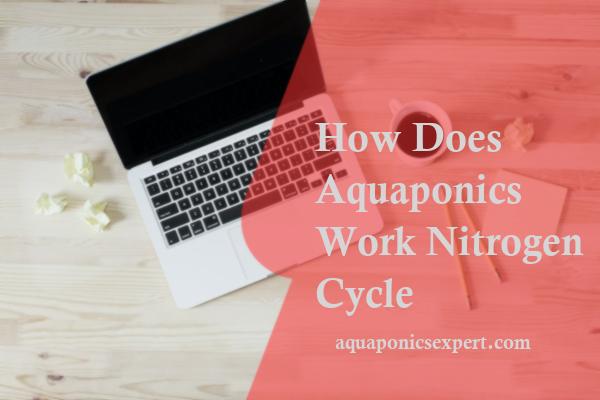How Does Aquaponics Work Nitrogen Cycle
Aquaponics is an innovative and sustainable method of food production that combines aquaculture (fish farming) and hydroponics (cultivating plants in water). But have you ever wondered how this extraordinary system works, and in particular, how it efficiently cycles nitrogen? To put it simply, **the nitrogen cycle** is at the heart of this mutually beneficial relationship between the fish and the plants.
How Does Aquaponics Work Nitrogen Cycle
Aquaponics is a sustainable method of farming that combines aquaculture (fish farming) and hydroponics (soil-less plant cultivation) in a symbiotic system. One of the key processes that facilitate the success of aquaponics is the nitrogen cycle. The nitrogen cycle refers to the conversion of waste produced by fish into a form that plants can utilize as nutrients, ultimately creating a closed-loop ecosystem.
The nitrogen cycle in aquaponics begins with fish excreting ammonia into the water through their gills and waste. This ammonia is toxic to fish but serves as a vital nutrient for plants. Nitrifying bacteria, specifically Nitrosomonas, convert ammonia into nitrite (NO2-) through a process called nitrification. Nitrite is also harmful to fish, but another group of nitrifying bacteria, Nitrobacter, further converts it into nitrate (NO3-), which is the primary source of nitrogen for plants.
Plants in the aquaponic system actively uptake nitrates from the water, utilizing them as essential nutrients for growth. This process helps to remove harmful nitrogenous compounds from the fish tank, maintaining a healthy environment for the fish. As the plants absorb nitrates, the water gets naturally filtered, and clean water is returned to the fish tank, starting the cycle again. In this way, aquaponics creates a sustainable and efficient system that utilizes waste and maximizes resource utilization.
Pro Tips:
- Regular monitoring of water parameters such as ammonia, nitrite, and nitrate levels is crucial to ensure the nitrogen cycle is functioning properly.
- It is important to maintain a balance between fish stocking densities and plant growth to avoid excessive accumulation of waste and nutrient deficiencies.
- Various types of plants can be grown in aquaponics, including leafy greens, herbs, and even fruiting plants like tomatoes, depending on the system’s design and nutrient availability.
Expert opinion:
According to a study conducted by Rakocy et al., the nitrogen cycle in aquaponics not only provides essential nutrients for plant growth but also significantly reduces the need for external inputs such as synthetic fertilizers. This sustainable farming method has proven to be highly efficient, with increased plant growth rates and improved water quality compared to traditional agricultural practices.
References:
– Rakocy, J. E., Masser, M. P., & Losordo, T. M. (2006). Recirculating aquaculture tank production systems: aquaponics-integrating fish and plant culture. Southern Regional Aquaculture Center Publication, 454.
What Is The Nitrogen Cycle In Aquaponics?
Aquaponics is an innovative and sustainable method of agriculture that combines aquaculture (fish farming) and hydroponics (growing plants in water). One of the key processes that drives the success of aquaponics is the nitrogen cycle. Nitrogen is an essential nutrient for plant growth, and in aquaponics, it is provided naturally through a series of biological transformations.
The nitrogen cycle in aquaponics starts with the fish. Fish excrete ammonia as waste, which is toxic to them and can build up quickly in the water. However, beneficial bacteria called Nitrosomonas convert ammonia into nitrites, a less harmful form. This is the first step of the cycle, known as nitrification. Nitrites, although less toxic, can still harm the fish in high concentrations.
The second step of the nitrogen cycle, called nitrite oxidation, involves another group of bacteria called Nitrobacter. They convert nitrites into nitrates, which are the most usable form of nitrogen for plants. Nitrates are taken up by the plant roots and used for growth and development. This process helps maintain a healthy environment for the fish, as the nitrates are removed from the water through plant uptake.
The plants in the aquaponics system act as a natural filter, absorbing nutrients from the water and providing clean and oxygenated water back to the fish. This symbiotic relationship between plants and fish forms the basis of aquaponics and allows for the sustainable production of both fish and vegetables. By harnessing the power of the nitrogen cycle, aquaponics minimizes the need for artificial fertilizers, creates a self-sustaining ecosystem, and maximizes resource efficiency.
How Do Beneficial Bacteria Convert Ammonia Into Nitrites And Nitrates?
Aquaponics is a unique and sustainable system that combines aquaculture (fish farming) with hydroponics (growing plants in water) to create a self-sufficient and highly productive method of agriculture. One of the key processes that allows aquaponics to work effectively is the nitrogen cycle.
The nitrogen cycle in aquaponics begins with the fish waste produced in the aquaculture component. Fish excrete ammonia, a toxic compound that is harmful to both fish and plants when present in high levels. However, in aquaponics, this waste is converted into beneficial nutrients through a natural process. First, bacteria present in the system oxidize the ammonia into nitrite, which is still toxic to fish but less harmful. Then, a different type of bacteria converts the nitrite into nitrate, which is a form of nitrogen that plants can easily absorb and utilize as a fertilizer.
The nitrate-rich water is then circulated into the hydroponics component of the aquaponic system, where it is absorbed by the plant roots and used for growth and development. As the plants consume the nutrients, they act as a natural filter, removing the nitrogen from the water. The purified water can then be recirculated back into the fish tanks, completing the cycle. This continuous exchange of nutrients and water between the fish and plants creates a symbiotic relationship, where each component benefits from the other, resulting in a highly efficient and sustainable method of food production.
What Is The Role Of Plants In The Nitrogen Cycle Of Aquaponics?
Aquaponics is a sustainable agricultural system that combines aquaculture (raising aquatic animals) and hydroponics (cultivating plants in water) in a symbiotic environment. An essential process in aquaponics is the nitrogen cycle, which plays a vital role in maintaining water quality and providing necessary nutrients for plant growth. The nitrogen cycle involves the conversion of harmful ammonia, produced by fish waste, into nitrate, a form of nitrogen that plants can easily absorb. This process occurs in four main steps: fish excrete ammonia through their gills and excrement, which is highly toxic to aquatic organisms and can be lethal in high concentrations.
In the second step, naturally occurring bacteria in the aquaponics system, known as nitrifying bacteria, convert the toxic ammonia into nitrite through a process called nitrification. Nitrite is also harmful to fish but less toxic than ammonia. The third step involves a different type of bacteria called nitrobacter, which further converts the nitrite into nitrate, a much less toxic form of nitrogen. Nitrate is highly valuable to plants as it serves as a rich nutrient source for their growth and development.
The final step in the process is the uptake of nitrate by the plants. Through their root systems, plants absorb the nitrate from the water, utilizing it for various biological processes such as protein synthesis, enzyme production, and overall growth. As the plants consume the nitrate, they effectively filter the water, removing excess nutrients and reducing the risk of nutrient imbalances or water pollution. The clean, nutrient-rich water is then recirculated back to the aquaculture tank, providing a sustainable and efficient system where fish and plants mutually benefit from each other.
How Does The Nitrogen Cycle Support The Growth Of Fish And Plants In Aquaponics?
Aquaponics is a sustainable system that combines aquaculture (the farming of fish) with hydroponics (growing plants in water without soil). At the heart of this system is the nitrogen cycle, which plays a crucial role in the overall function and success of aquaponics. It involves the conversion of fish waste into plant-friendly nutrients through a series of biological processes.
In the aquaponics system, fish produce waste in the form of ammonia, mostly through their urine and gills. Ammonia is toxic to fish, so it needs to be converted into a less harmful substance. This is where beneficial bacteria known as nitrifying bacteria come into play. These bacteria colonize surfaces in the aquaponics system, such as the walls of the tank and the grow bed media.
The first type of nitrifying bacteria, called Nitrosomonas, converts the toxic ammonia into nitrite, which is still harmful to fish but less toxic than ammonia. The second type of nitrifying bacteria, Nitrobacter, then converts the nitrite into nitrate, which is the preferred source of nitrogen for plants. Nitrate is taken up by the plants through their root systems and used for growth and development. This process of converting ammonia to nitrite and then to nitrate is referred to as nitrification.
The plants play a vital role in the nitrogen cycle by acting as a biofilter. As the plants absorb nitrate from the water, they not only provide essential nutrients for their own growth but also help to purify the water for the fish. This creates a symbiotic relationship between the fish and the plants, where the fish waste provides nutrients for the plants, and the plants filter the water, creating a healthy environment for the fish. This continuous cycle allows for the sustainability and efficiency of aquaponics.
Conclusion
In conclusion, the nitrogen cycle is a crucial process in aquaponics that ensures the growth and sustainability of both plants and fish. Through this cycle, fish release ammonia as waste, which is then converted into nitrites and nitrates by beneficial bacteria. These nitrates serve as a nutrient source for the plants, while the plants absorb and filter the water for the fish, creating a harmonious and symbiotic relationship. As a result, aquaponics systems provide a sustainable and efficient method of food production, minimizing the need for external fertilizers and chemical additives. With its ability to conserve water and maximize space, aquaponics holds tremendous potential for addressing food scarcity and promoting environmental sustainability.







